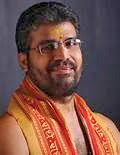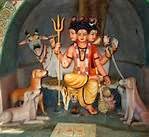Swami Udit Chaithanya :

Swami Udit Chaithanya was born and brought up in Kerala, the beautiful green state in the southern west part of India. After graduating in Law, Swamiji joined Sandeepani Sadhanalaya in Bombay. Finishing his post graduation in Vedanta, he became a part of the Chinmaya mission and served the organisation for 3 years. He was inspired by Swami Sevananda who was the secretary of Acharya Vinoba Bhave when he discovered a new dimension in Sevanandaji's unique interpretations of India's ancient spiritual texts. Ever since, Swamiji has been teaching the messages of Srimad Bhagavatham, Bhagavad Gita, Narayaneeyam and the other Holy Scriptures to thousands of people in India and abroad. Swamiji has dedicated his life to the mission of spreading the divine message and to transform the society and the individual through heightened spiritual awareness. Swami Udit Chaitanya is the founder of Bhagavatham village, a spiritual retreat home and Swamiji has formed “Bhagav...




